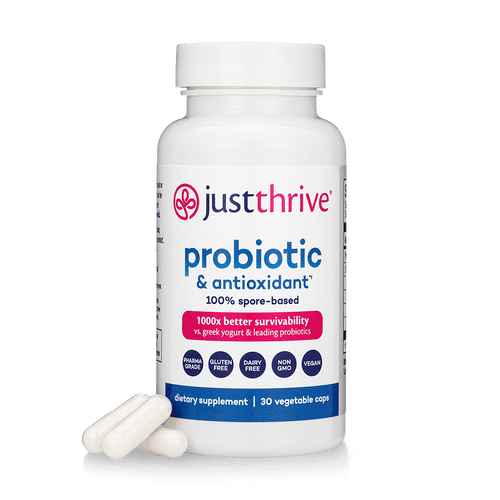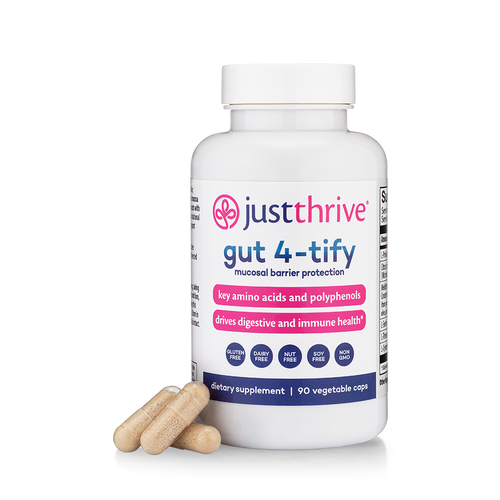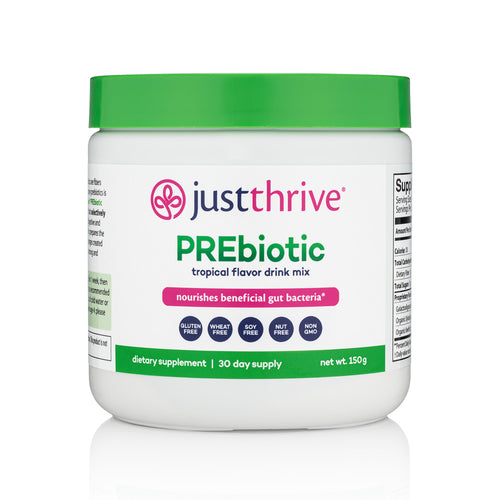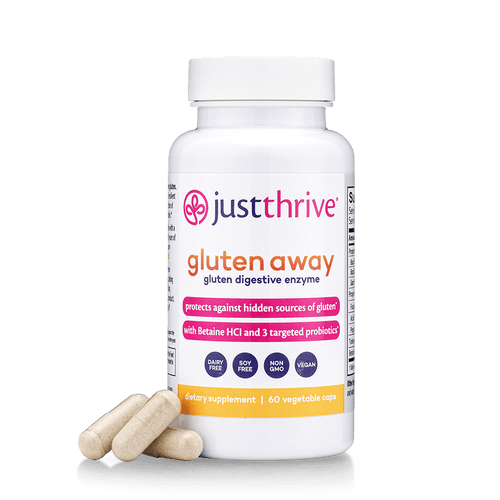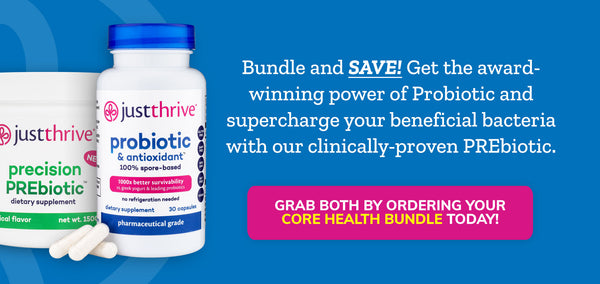Probiotics and the importance of a healthy gut have been in the collective health-consciousness for a few decades. Consumers generally have a rough idea of why a diet or supplement regimen focused on gut health can transform gut issues (think: leaky gut, food allergies, intestinal wall damage, glyphosate exposure, etc.) However, it may be less clear that the impact of probiotics hardly stops in the gut. I would love to expand your sense of how much of your body ecology can be transformed, from your yoni to your psychology, when you tend to the “garden” in your gut.
Whole Systems Approach
Much like how a permaculturalist knows that the health of a multiple of integrated systems (air, water, soil, microbes, bacteria) contributes to the health and resilience of food forests, naturopaths and wholistic practitioners recognize the same multi-system approach can strengthen the health of our body ecology and overall well-being.
For instance, if suffering from a dysfunctional or depleted gut microbiome, the symptoms might not be obvious for women. Secondary or tertiary issues like anxiety, gum disease, acne, stress, chronic yeast infections, weight trouble… are actually related to the health of your gut, which controls virtually every aspect of your biology.
The main takeaway is that almost none of the issues above are overtly linked to intestinal microflora being out of balance, creating a frustrating scenario of: symptoms, treatment, suppression of symptoms, then eventual re-emergence of symptoms in a chronic cycle since the root cause may never be addressed. This speaks to the importance of maintaining a healthy microbiome to the body’s natural ecology.
In an effort to unpack the mysterious connection between the microbiome and nearly every other system in the body, I would like to guide you to a greater understanding of the physiology, or cellular mechanics, directly involved.
Vaginal Health and Excess Estrogen >> It Starts With Your Gut.
There is an intricate relationship between bacteria found in the intestinal tract and the direct health of the vaginal canal.
Excess Estrogen Issues
Specific beneficial gut bacteria exist that literally consume estrogen and convert it into not just harmless, but actually helpful, substances. The community of these kinds of estrogen-transforming bacteria in the gut are called collectively ‘the estrobolome.’ It is the estrobolome bacteria’s job to metabolize and clear excess estrogen.
But what happens if your gut is lacking in both number and diversity of microflora? Researchers have found that estrogen levels could rise, which makes sense. If you have fewer estrogen-eating bacteria to control circulating levels of estrogen, then, your estrogen levels will rise or remain high. If you have low diversity of gut bacteria, the estrobolome bacteria’s function is going to be very low, which can lead to Estrogen Dominance for BOTH women and men. (Yes, you read that correctly.)
Estrogen Dominance for women is associated with increased breast cancer risk, PCOS (Polycystic Ovarian Syndrome), heavy menstrual flow, acne, facial hair, etc.
One of the most common recommendations for addressing Estrogen Dominance is to consume specific foods like cruciferous vegetables, which bind with the estrogen so that the bound-up form can be removed from the system. However, just binding estrogen isn’t necessarily going to solve the problem. Metabolizing estrogen by a diverse gut microbiome has been found to be the key.
Metabolizing & Breaking Down Estrogen
Estrogen by-products have an intriguing way of leaving the body. After they're broken down, the by-products exit the intestines through the gut mucosa, and then enter into the vaginal mucosa. Once in the vaginal space, these metabolites become the food for the most important beneficial bacteria living in the vaginal canal. The deep connection between gut and vaginal flora (where estrogen metabolism by-products are supposed to feed the beneficial “good” bacteria in the vagina) cannot thrive without gut diversity maintaining a minimum healthy estrobolome population.
Not having these beneficial gut-bacteria-produced substances (aka food for healthy vaginal flora) in the system can lead to an overgrowth of the “bad” microbes, causing:
1. Chronic vaginal yeast infections from an overpopulation of Candida albicans; 2. Bacterial Vaginosis (BV) due to an overpopulation of pernicious anaerobic bacteria; and 3. Urinary Tract Infections. All of these conditions are contributed to by the dysfunction of the gut microbiome, causing the vagina to be unable to self-regulate.
Diversity is Queen
The most natural route to supporting this innate symphony is by encouraging microbial diversity. By taking a spore based probiotic like the ones included in Just Thrive’s hallmark formula with four different strains can dramatically support a healthy gut biome diversity (and thus also estrobolome.

Transit Time: Movin’ On Out
The health of your gut’s microbiome is influenced by a few factors. The number and variety of microbes that are present in your natural ecology certainly affect the gut’s landscape. But just as much depends also on how long microbes linger in the gut after doing the work of breaking down your food.
The amount of time it takes for food to travel through the intestines is called ‘transit time.’ The longer it takes food to move through, the more likely it is that more harmful by-products will get produced. When this happens, disruptions occur to your gut flora, throwing off the microbiome’s harmony. This means that transit time is a key factor in a healthy digestive system.
In a study from the National Food Institute (among others), researchers found that a high bacterial load in your waste can be associated with a long transit time. (In this case, this high bacterial load isn’t a balanced and healthy one.)
“In short, our study shows that the longer food takes to pass through the colon, the more harmful bacterial degradation products are produced,” supervisor and professor at the National Food Institute, Tine Rask Licht, explains. Data like this shows how sensitive the gut is to bacterial disruptions and helps us understand what kinds of things can disrupt the balance we strive to achieve in our gut ecology.
Transit-Time as a Consideration for Healthy Pregnancy
Pregnancy, itself, has little effect on gastrointestinal secretion or absorption, but it has a major effect on GI motility, aka transit-time. Rising and elevated levels of the hormone progesterone during pregnancy slows gut motility.
On top of the typical slow-down incurred by progesterone, there are additional motility challenges during pregnancy. As the uterus enlarges it starts to displace space in the large intestine. Imagine the narrowing of a garden hose… elimination becomes slower once again.
Influencing food’s transit time
Tine Rask Licht of the National Food Institute brings encouraging news: people’s dietary choices can positively influence transit time.
”You can help food pass through the colon by eating a diet rich in fibre [sic] and drinking plenty of water. It may also be worth trying to limit the intake of, for example meat, which slows down the transit time and provides the gut bacteria with lots of protein to digest. Physical activity can also reduce the time it takes for food to travel through the colon.”
Beyond basic attention to diet and lifestyle choices, there is a simple way to boost your daily fiber intake to ensure you are getting not just any fiber, but a highly curated, biome-loving PRE-biotic fiber blend. Just Thrive has taken the steps to deliver a PRE-biotic that works glove-in-hand with their PRO-biotic blend to ensure your gut will thrive AND keep things moving down the line as it was intended.
Daily Regimen for Healthy Yonis, Biomes, and Women!
Whether you are looking to diversify your gut biome or decrease your transit-time, both can be easily tended to ensure vibrancy with a daily pre- and probiotic.
One important pro tip: Probiotics Aren’t All the Same
Increasing gut diversity is key to balancing and maintaining a healthy microbiome. Probiotics can do the job fabulously, but making sure these microbes arrive at the destination in-tact is the real task. This is where a spore based probiotic stands head and shoulders above other probiotic choices.
Sure, eating fermented foods can provide natural cultures, but most people don’t realize that the live strains consumed in your yogurt never actually make it to your gut alive. Why? Stomach acid, namely. The intensity of the low pH environment in the stomach renders nearly all live cultures inert. That is: except for those strains that are naturally spore encapsulated like the Just Thrive Probiotic formula. When compared to an industry study of the top 25 conventional probiotic brands, all containing only Lacto/bifido strains which do not have spore encapsulation, there was a loss of 99% of these cultures upon entering the stomach. That’s nearly everything!
Just Thrive’s flagship Probiotic only contains 4 Bacillus strains (something never done before), while other companies have sometimes 10-20 different Lactobacillus strains. Despite having less number of strains, the Just Thrive Probiotic strains actually make it past the entire upper GI tract and land in the gut fully intact and ready to work. These 4 incredibly powerful strains arrive 100% intact, diversifying and re-landscaping your gut’s ecology.
PREbiotics = Fiber = Food for Your Gut Biome
After taking a daily probiotic to help diversify your gut flora, it might also be wise to think about that pesky transit-time factor - especially for pregnant women. As stated above by experts from the National Food Institute, we can augment our elimination or transit-time via 1 of 3 routes: water, exercise, and fiber intake.
Ensure daily hydration (you got this!) and daily movement of some sort (could be as little as 10 minutes). In addition to those factors, supplement with prebiotic fibers that are clinically proven to nourish the beneficial microbes in your belly. Precision PREbiotic targets your most important, keystone, protective strains with the exact PREbiotic fibers they want most. Each bacteria strain in our gut has its favorite food (ie, specific fibers), this is why fiber in the diet is critical.
Without a source of healthy fiber (vegetables, non-gluten grains, pre-biotic supplementation, etc) these keystone strains don’t do very well. However, when they do - even other non-fiber dependent healthy microbes flourish as well in response to the rise in the keystone species. Designed to feed these keystone strains that are reliant on fiber to flourish, the order of operations is something like this:
Feed the keystone strains of microbes; Bulk up the fibers in your gut; and, in turn, Feed all of the rest of biome!
About Kimberly Jean DeLisio
Kimberly holds a BSN in Nursing, with years of experience as a PICU & trauma nurse, and a Master's of Arts in Education Research. She currently sits on the Editorial Review Board for the Journal of the American Herbalists Guild.
Kimberly has studied directly under Alexis Durham, lead herbalist at Herb Pharm, Sajah Popham of Organic Unity Spagyrics, Tyler Wauters of Hawthorn Institute, Master TCM Herbalist Chris Morano of Clearpath Herbal School amongst many others. Kim, in recent years, started and directed several large scale commercial herbal apothecaries for community retailers on both the West and East coast, with close working knowledge of over 300+ botanicals.







